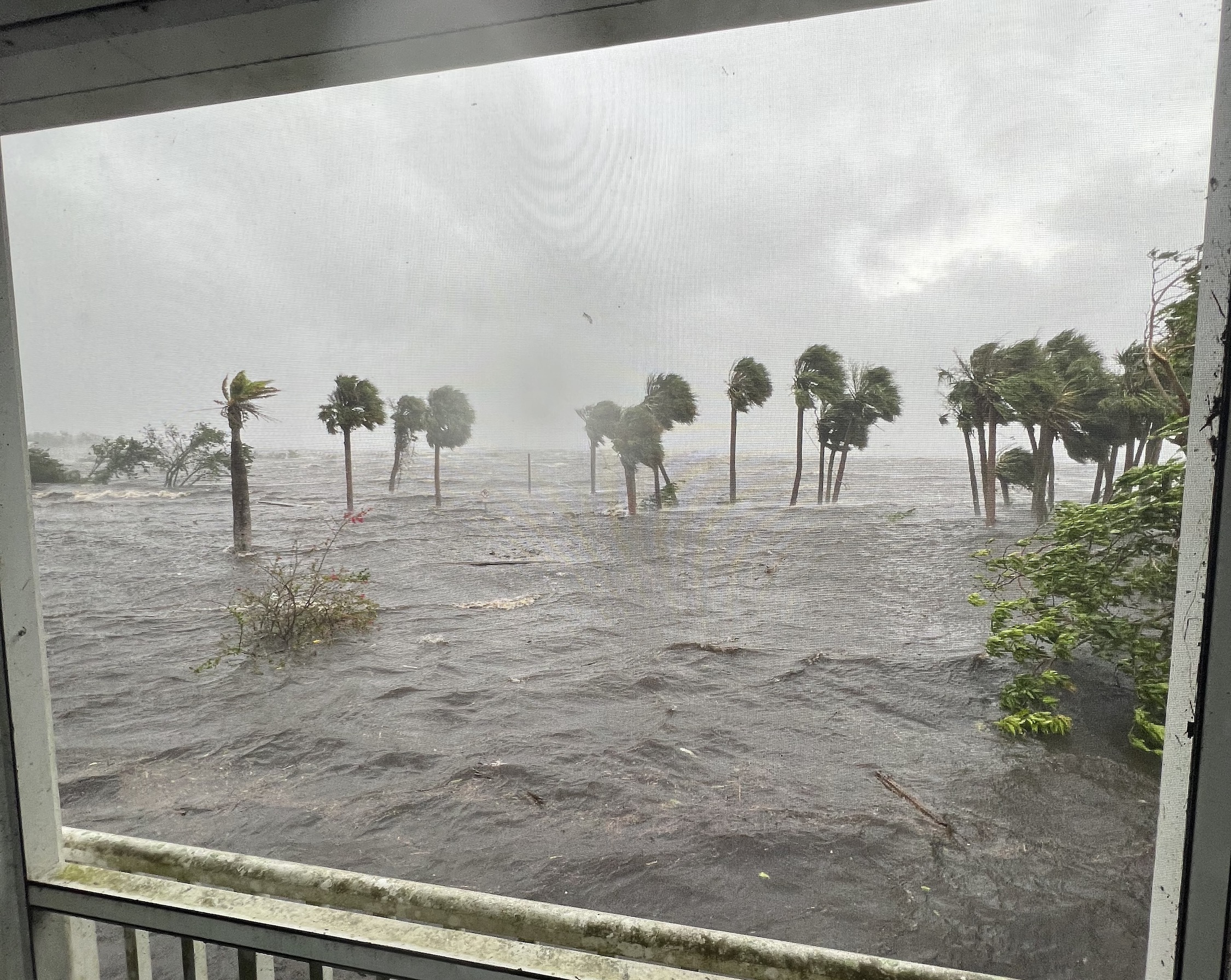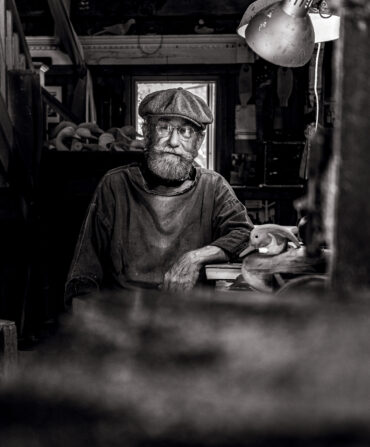Hurricane Ian
A Frantic Race to Survive the Surge of Ian
What happens when you pack up all your valuables to flee a hurricane—and instead drive straight into the eye of the storm? One man’s harrowing account

Photo: Sean Casey
Sean Casey's sister's house from a neighbor's balcony.
As Hurricane Ian gathered strength in the Gulf of Mexico, Sean Casey had a decision to make. The thirty-year-old, who works in sales for a tech company, lives in Tampa, which was initially forecast to be the focal point of Ian’s powerful landfall. “I was going to stay home,” Casey says. “But I had a lot of emotionally charged and caring family members begging me to get out.”
So he did. The day before the expected landfall, Casey put his guitars, his cat, and as many other valuables as he could fit in his Nissan truck and drove 125 miles south to his sister’s house in Fort Myers. She had gone to a high-rise for the night with her fiancé, believing, too, that the worst of the storm would be farther north. “I figured I’d ride it out there and then go home,” Casey says.
But as he slept at his sister’s one-story house, the path of the Category 4 hurricane that may well turn out to be the most destructive in Florida’s history changed course and was set to hit land exactly where he’d fled. “By the time I woke up the next morning, it was too late to get out of Fort Myers and too late for my sister to come home,” he says. That left Casey at the house along with his cat, Dwight, and his sister’s three dogs and cat.
As the morning progressed, the howling gusts of wind began to shake the house. By eleven o’clock, Casey says, “I knew it was going to be bad.”

Photo: Sean Casey
These photos, taken at 1:22, 3:10, and 3:52 p.m., show the rise of the Caloosahatchee River.
Located in the Russell Park neighborhood, his sister’s house was situated across the street from the Caloosahatchee River. By two that afternoon, the river had jumped its banks and a shallow sheet of water covered the road and the driveway. One hour later, the surge began in earnest. The water, now coming in waves, rose about four feet in just one hour, Casey estimates. “I was in shock and realized I had to get out of the house then,” he says.
He waded his way over to a neighbor’s house, which was built on stilts. After he got there, he stood on the porch and looked back at his sister’s house and saw that the water was now over the hood of his truck. “I cannot properly convey how quickly and ferociously the water was coming up then,” Casey says. “That’s when I realized that in my panic, I had forgotten about the animals.”

Photo: Sean Casey
Casey's view of the flooding from a neighbor's house.
Casey jumped back into the water and headed to his sister’s house. By now, the water was up to his armpits (he is six foot three). He bounced and swam his way to the garage, where he knew his sister had a canoe. He grabbed it and maneuvered it through a door that connected to the kitchen and then swam it around the house, which was filled with three feet of water, collecting all of the animals and hoisting them into the canoe. Immediately, the two cats began to hiss at each other. His sister’s cat was seventeen years old and not in good health, so he made the decision to relocate Dwight—“who means more to me than anything in the world,” Casey says—to the highest shelf in the bedroom.
When he returned to the kitchen, he noticed that the roiling water was tossing the canoe around. “I was scared that the animals would get knocked out of it,” Casey says. So he pulled the canoe into a hallway, where the water was calmer.
As he plotted his next move, he heard the crash of breaking glass. The sliding glass doors in the kitchen had given way. More water—two feet, by Casey’s reckoning—suddenly poured into the house. The swell slammed him into the hallway wall, pinning him behind the canoe for “at least two minutes, which felt like an eternity,” he says. Casey managed to wriggle free by swimming under the canoe into the kitchen. “I hit my head pretty hard, on a floating table or chair or something, and at that point, I thought, ‘This might be it,’” he says. The water in the house was so high by then that there was no way to get the canoe out. So he swam through the broken glass door and back to the neighbor’s house.

Photo: Sean Casey
A fishing boat became unmoored and crashed into Casey’s truck, possibly saving it from plowing into a neighbor’s house.

Photo: Sean Casey
A view as the waters started to recede.
There, he watched the storm from a window. The surge finally appeared to hit its high mark near sunset. But then he heard a strange thumping noise: A big offshore fishing boat had come unmoored, hit his sister’s house, and become stuck, wedged in between the house and his truck. If not for his truck, Casey believes, the big boat would have kept coming and drifted into the stilts of the neighbor’s house. “Then we would have been in the water, in a whole different survival situation,” he says.
By the next morning, the water had receded enough for Casey to inspect the damage. Everything in his truck was gone, save for one of his guitars, which was completely destroyed, and a single Frisbee golf disc. The frame, walls, and roof of his sister’s house somehow remained intact, but inside “it looked like a demo crew had gone through it,” Casey says. All of the drywall and windows and doors had been blown out. The waterline peaked at the top of the doorframes, at approximately eight feet.

Photo: Sean Casey
The destroyed kitchen at Casey's sister's house.
Casey found the canoe, which had been pushed into the living room. Within it were two of the dogs, alive, but shaken. Soon afterward, he came across the body of his sister’s cat. Her other dog and Dwight were nowhere to be found.
“I realize I shouldn’t have left Tampa,” Casey says, “but I’d do it all over again to save those animals.” He is continuing the search for Dwight and the missing dog. “I choose to believe that they are still out there somewhere, waiting to be found.”
How you can help relief efforts in the wake of Hurricane Ian







